Can You Whiten Your Teeth with a Tanning Bed? Guide for Your Support!
The allure of achieving a white smile through unconventional methods has led many to explore using a tanning bed for teeth whitening. This concept, often discussed in salons and tanning sessions, revolves around the belief that UV light from tanning beds can whiten teeth.
The concept of using tanning beds to whiten teeth is a common myth. Tanning beds do not whiten teeth. While teeth may appear whiter against darker, tanned skin, tanning beds have no teeth-whitening capabilities.
This article explores the science behind how tanning beds work, effective teeth-whitening methods, and the risks of using specialized products that claim to whiten teeth during tanning sessions.
Understanding Tanning Beds
Tanning beds use focused ultraviolet (UV) light to tan skin. There are two types: UVA rays that tan the deeper layer of skin (melanin) and UVB rays that burn the outer layer. However, these ultraviolet radiations pose significant health risks.
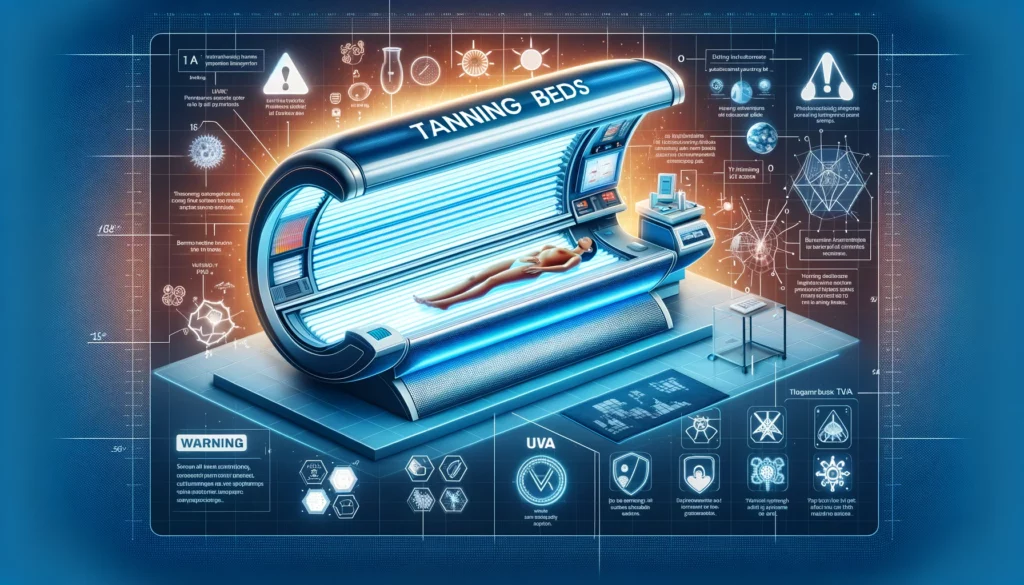
Along with the cosmetic effects, exposure to concentrated UV light poses significant health risks like skin cancer, premature aging, wrinkles, etc. Thus, tanning beds are considered more hazardous than natural sunlight. However, the UV light used in tanning beds has no teeth-whitening properties. Thus, while they may be a popular choice in tanning salons, their safety is a major concern.
The Science of Teeth Whitening
Effective teeth whitening involves applying gel-containing whitening agents like hydrogen peroxide or carbamide peroxide. These release oxygen to lift and dissolve stains. Whitening gels are often used with safe LED blue light to enhance results. Other methods like whitening toothpaste, strips, or trays use similar ingredients. In contrast, UV light can damage teeth and gums without improving whiteness.
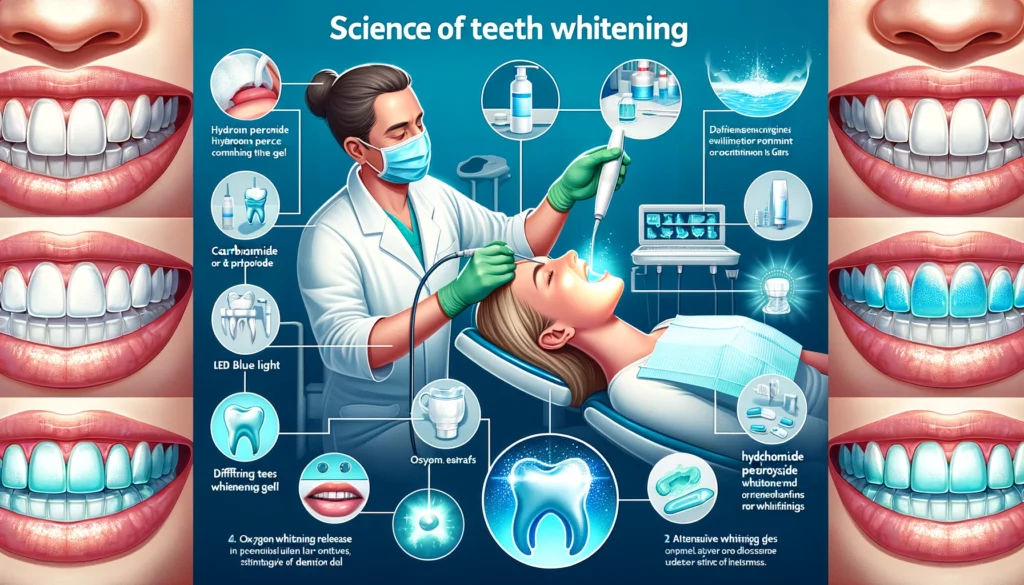
Effective Teeth Whitening Methods
Achieving a pearly white smile is a common desire, and the market offers various methods to brighten your teeth. When it comes to safely brightening your smile, legitimate teeth whitening methods use special gels and light to lift stains rather than harsh ultraviolet (UV) light. From professional treatments to at-home kits, each method has its unique benefits and considerations.
Professional Whitening
- Custom trays and hydrogen peroxide gel: Dentists use custom-fitted trays filled with a hydrogen peroxide-based gel for precise application and effective results.
- High effectiveness and safety: This method is known for its high effectiveness, providing significant whitening results under professional supervision.
Over-the-Counter Kits
- Whitening strips, gels, etc.: Easily available in pharmacies, these kits include whitening strips and gels that can be applied at home.
- Convenient, moderate effectiveness: While convenient and user-friendly, their effectiveness can vary and is generally moderate compared to professional treatments.
LED Light Whitening
- Works with hydrogen peroxide: LED light enhances the whitening effect of hydrogen peroxide, speeding up the process.
- Enhances whitening, less harmful than UV: LED light is a safer alternative to UV light, reducing the risk of gum irritation and enamel damage.
Specialized Tanning Bed Whitening
While tanning beds are traditionally used for skin tanning, some products claim to whiten teeth during a tanning session and whiten teeth with special kits.
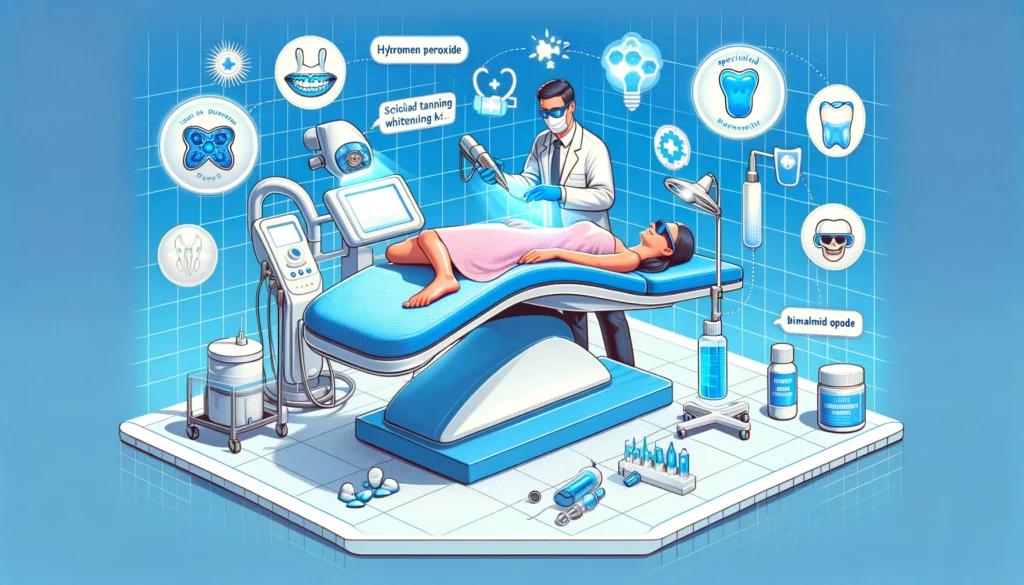
Twilight Teeth
- Whitening gel and mouthpiece: The product includes a whitening gel and a mouthpiece, designed to be used in conjunction with a tanning bed.
- Claims effective teeth whitening during tanning: Twilight Teeth promises to whiten your teeth effectively while you tan, offering a dual benefit.
Process and Usage Tips
- Apply gel, and use mouthpiece during the session: Users are instructed to apply the gel to their teeth and use the mouthpiece during their tanning session.
- Caution for sensitive teeth and gums: It’s important to be cautious if you have sensitive teeth or gums, as the whitening agents may irritate.
Risks and Considerations
- Gum irritation: The concentrated peroxide in the gel can increase the risk of gum irritation.
- Not suitable for sunlight: These products are specifically designed for use in tanning beds and may not be suitable for direct sunlight exposure.
Protecting Teeth in Tanning Beds
While using tanning beds provides no teeth whitening, you can minimize dental risks by taking basic protective measures during sessions. When seeking a sun-kissed glow in a tanning bed, it’s crucial to protect your teeth and gums. Here are some effective strategies to ensure your dental health isn’t compromised during your tanning session.
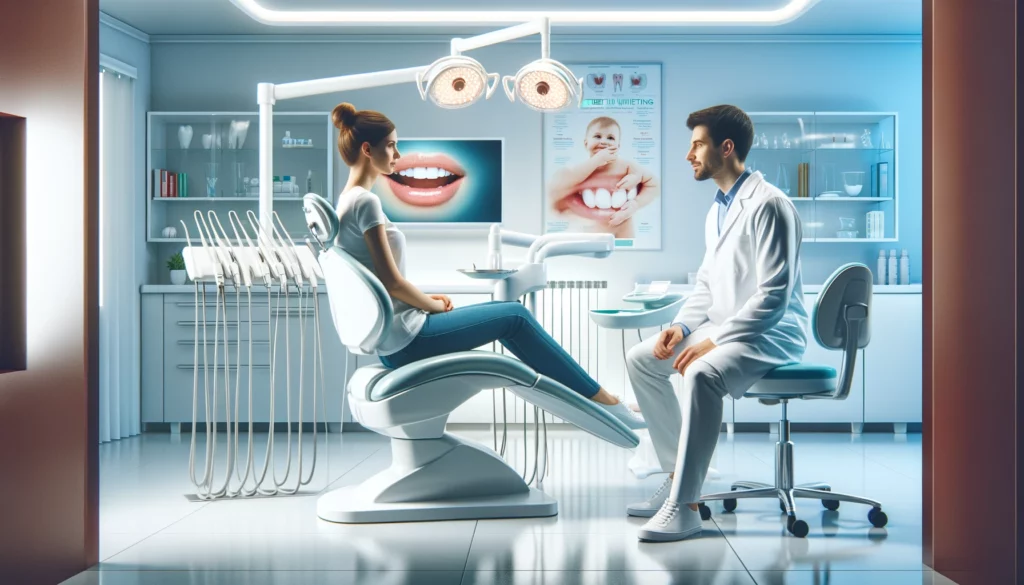
Keep Mouth Closed
- Prevents UV Exposure: Keeping your mouth closed minimizes direct exposure of your teeth and gums to UV light.
- Reduces Risk of Damage: This simple action can significantly reduce the risk of UV-induced damage to your oral health.
Avoid Whitening Strips
- Potential for Uneven Whitening: Using whitening strips in a tanning bed can lead to uneven results and increased sensitivity.
- Risk of Gum Irritation: The combination of UV light and bleaching agents can irritate gums and weaken tooth enamel.
Alternative Teeth Whitening Methods
Beyond tanning beds or UV light, many safe at-home and professional pathways exist to naturally or artificially put your smile’s whitest foot forward. For those seeking a brighter smile, there are safer and more effective alternatives to tanning bed teeth whitening.
Professional Dental Procedures vs. At-Home Kits
- Customized Treatments: Dentists offer professional whitening treatments using hydrogen peroxide or carbamide peroxide for optimal results.
- DIY Convenience: At-home kits provide a convenient, though less potent, alternative to professional procedures.
Whitening Toothpaste, Strips, and Natural Remedies
- Daily Maintenance: Whitening kit toothpaste helps maintain a white smile by gently removing surface stains.
- Natural Options: Remedies like baking soda and lemon can offer mild whitening
Expert Opinions and Studies
Dentists strongly advise against using tanning beds for teeth whitening, as UV light does not affect lifting stains while posing gum damage risks. One clinical study on 16 participants using a special Twilight Teeth kit found slightly improved whiteness after 2 weeks of biweekly tanning sessions. However, experts criticized the lack of a control group to compare bleaching efficacy and raised concerns about elevated hydrogen peroxide exposure.
User Experiences and Testimonials
Users often report minimal or no teeth whitening results from tanning bed sessions.
- Jessica: used tanning bed whitening with trays for 2 months but stopped due to increased temperature sensitivity. While she noticed some whitening effects initially, her dentist pointed out subtle enamel erosion likely caused by extended exposure to the gel.
- Marco: applied whitening strips during his regular tanning visits and was satisfied with moderate whitening without any irritation. However, others should use such methods cautiously by following usage guidelines.
- Before and After Comparisons: Photos typically show little change in tooth color after using tanning beds for whitening.
- Testimonials on Alternative Methods: Many users find better whitening results with at-home kits or professional dental treatments.
- Feedback on Tanning Bed Risks: Some users report increased tooth sensitivity and gum irritation after attempting to whiten teeth in tanning beds.
Safety Tips and Best Practices
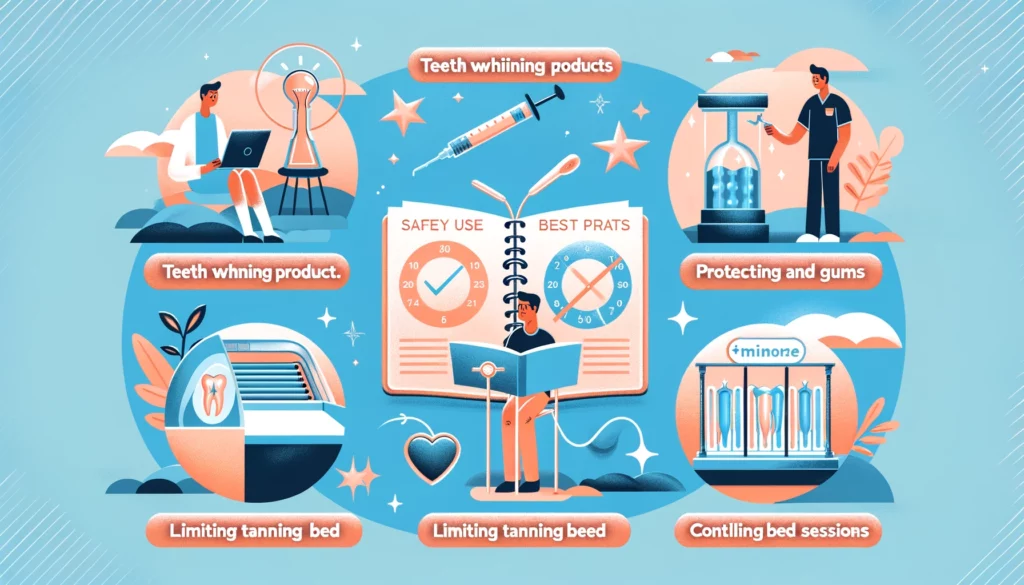
- Proper Use of Whitening Products: Always follow the instructions when using teeth whitening products to ensure safety and effectiveness.
- Protecting Teeth and Gums: Use protective mouthpieces and avoid applying whitening gel directly to gums.
- Limiting Tanning Bed Sessions: To reduce the risk of skin damage and enamel deterioration, limit the frequency and duration of tanning bed sessions.
- Consulting with Dentists: Before attempting any teeth whitening method, especially in a tanning bed, consult with a dentist for personalized advice and safe practices.
Conclusion
In summary, the belief that tanning beds can effectively whiten your teeth is a misconception. The UV light used for tanning does not provide the necessary properties to brighten teeth. Instead, it’s advisable to explore safer and more effective teeth whitening methods.
Professional dental treatments or at-home whitening kits, which often contain hydrogen peroxide or carbamide peroxide, are recommended for those seeking a whiter smile. These methods are not only more reliable but also prioritize the health of your enamel and gums.
Ultimately, tanning beds themselves have no reliable teeth-beautifying effects. But proven methods like dental whitening procedures, whitening toothpaste, gels, and motion-activated LED light devices can safely maximize your shine. As research provides deeper insight, individuals should educate themselves on the advantages and drawbacks of any approach promising to lighten smiles.
Remember, consulting with a dentist is the best way to choose a teeth whitening process that suits your needs and ensures the safety and beauty of your smile.

Muhammad Asif Saeed, a seasoned professional in commerce and finance, holds a Bachelor of Commerce degree specializing in Accounts and Finance, complemented by an MBA with a focus on Marketing. With an impressive 20-year career in Pakistan’s textile sector, including roles at Masood Textile (MTM) and Sadaqat Limited, he excels in business and financial management.
Muhammad Asif Saeed is also a recognized authority in the field, contributing authoritative articles to renowned websites such as businessproplanner.com, businessprotips.com, distinctionbetween.com, trueqube.com, and bruitly.com. His insightful perspectives on complex finance and business operation topics underscore his comprehensive knowledge and professional expertise.

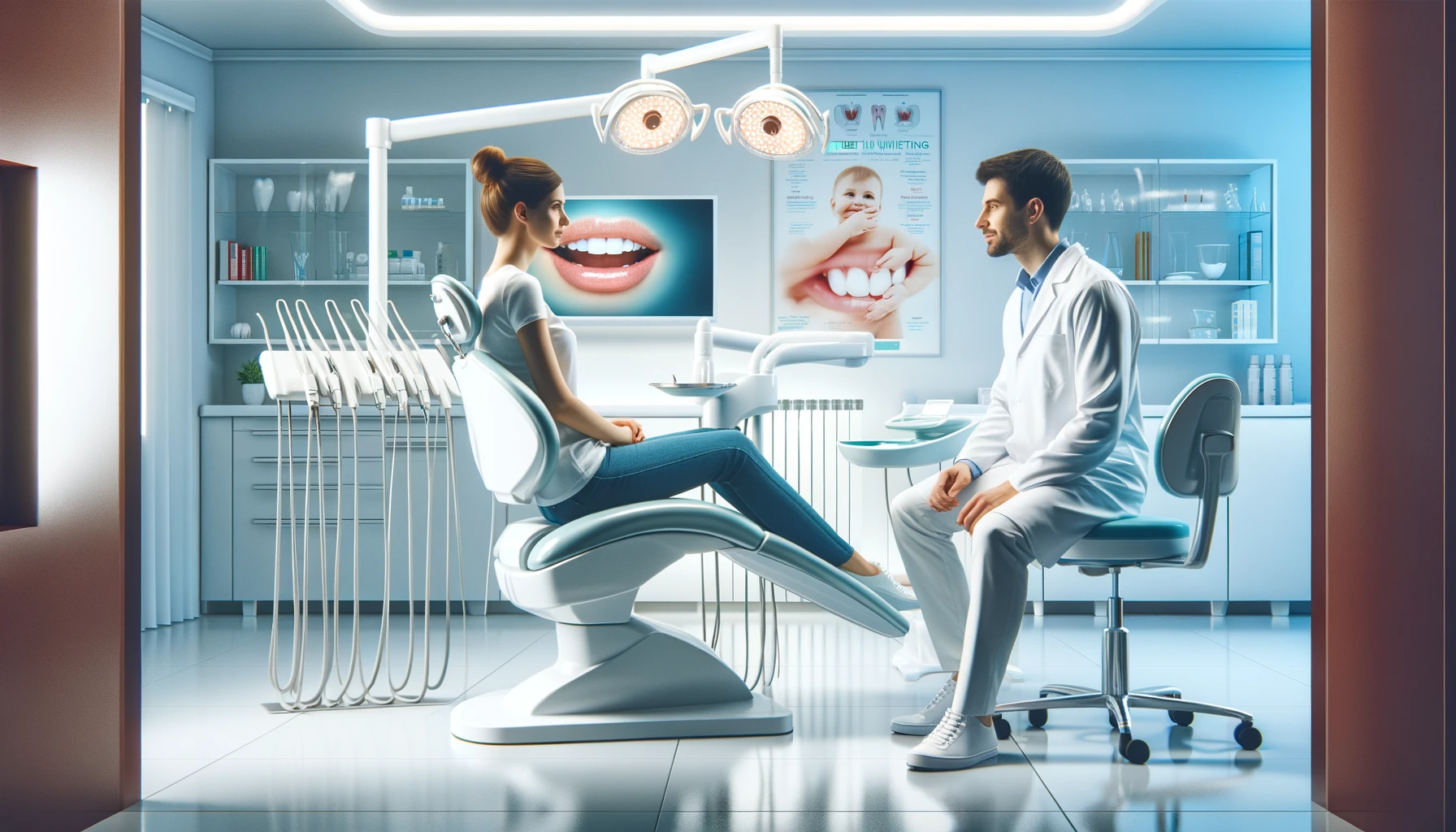

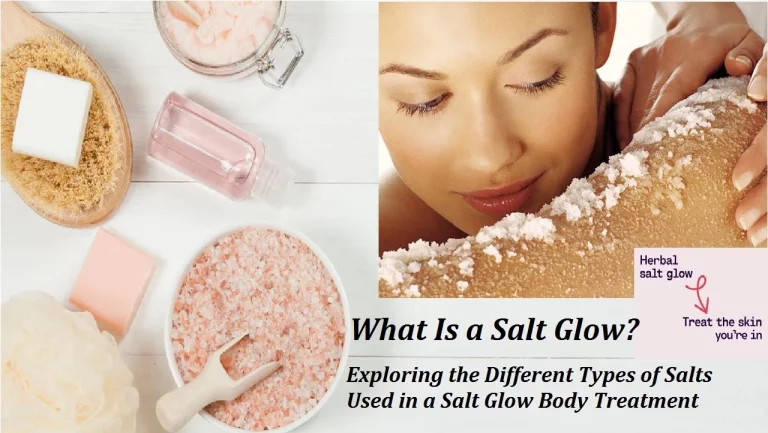


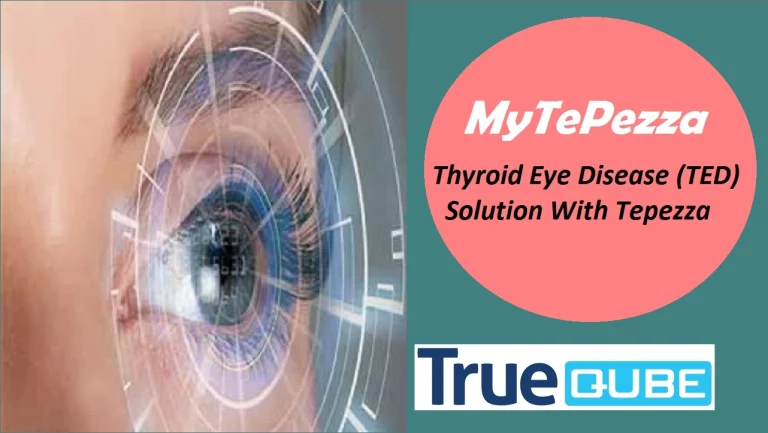

One Comment